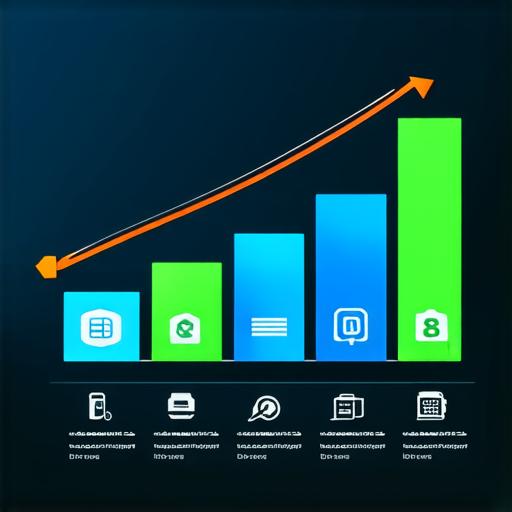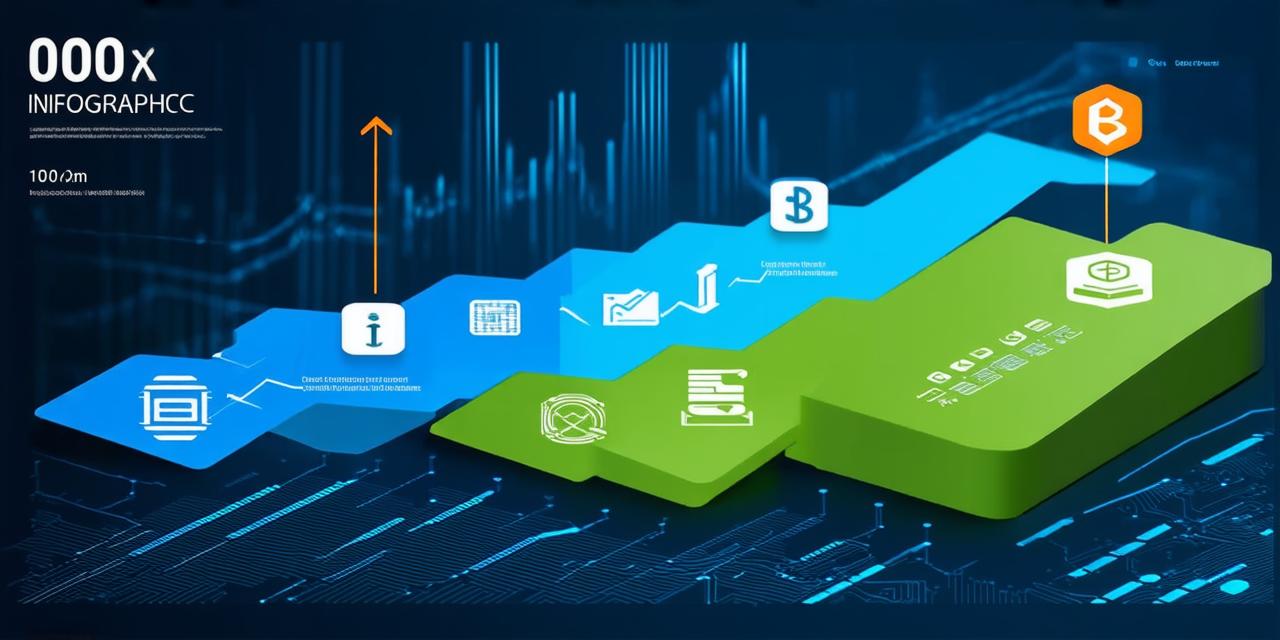Blockchain technology has revolutionized the way we store, transfer, and manage digital assets. It is now possible to buy, sell, and trade goods and services on a decentralized platform that eliminates intermediaries and cuts costs.
Mining: The Basics
Mining is a process that involves using powerful computers to solve complex mathematical problems on the blockchain network. These problems are designed to prevent fraudulent transactions and ensure the integrity of the system. As a reward for their efforts, miners receive newly minted coins, which they can then sell on an exchange.
There are several factors that affect the profitability of mining, including the difficulty level, the price of the coin, and the cost of electricity. To be profitable, miners need to have access to cheap electricity, a powerful computer with specialized hardware, and a high level of technical expertise.
One popular example of mining is Bitcoin, which was the first cryptocurrency to be created. Bitcoin mining involves solving complex mathematical problems using specialized software that requires a significant amount of computing power. As a reward for their efforts, miners receive newly minted bitcoins, which they can then sell on an exchange.
Staking: A Passive Income Stream
Staking is another way to cash out money from blockchain. It involves locking up coins in a smart contract that rewards users with interest or dividends based on the amount of coin they hold. This process is often referred to as “proof-of-stake,” and it allows network participants to validate transactions without having to use their computers to solve complex mathematical problems.
Staking can be a lucrative passive income stream, especially for investors who have a large stash of coins that they are not planning to sell anytime soon. However, it is important to note that the rewards for staking vary depending on the platform and coin being used. Some platforms offer high returns for stakers, while others may only offer a small percentage of the transaction fees.
One popular example of staking is Ethereum, which is one of the largest blockchain networks in use today. Ethereum uses a proof-of-stake consensus mechanism that rewards users with newly minted ether tokens based on the amount of ether they hold. Users can then sell these tokens on an exchange to cash out their profits.
Trading: Buying and Selling Coins
Trading is another way to cash out money from blockchain. It involves buying coins with fiat currency, such as US dollars or euros, and selling them at a profit on an exchange. This process is often referred to as “day trading,” and it requires a high level of technical expertise and risk management skills.
Day trading can be highly profitable, especially for investors who are able to predict market trends and take advantage of price fluctuations. However, it is also highly risky, and investors should always be prepared to lose money.
Case Studies: Real-Life Examples of Successful Blockchain Cashouts
Mining: The Bitcoin Boom
In 2017, the price of bitcoin reached an all-time high of $20,000, causing a massive mining boom. At the time, miners were able to make significant profits by solving complex mathematical problems on the blockchain network and receiving newly minted coins as a reward. However, this boom also caused a significant increase in electricity costs, making it less profitable for miners to continue operations.
Staking: The Ethereum Staking Rewards
Ethereum is another popular example of successful staking. In 2021, the price of ethereum reached an all-time high of $4,368, causing a significant increase in staking rewards for network participants. At the time, users were able to earn up to 9% annual interest on their ethereum holdings, making it a highly attractive passive income stream.
Trading: The Bitcoin Bull Run
In late 2017 and early 2018, the price of bitcoin experienced a massive bull run, reaching an all-time high of $20,000 in December 2017. This caused a significant increase in day trading activity on cryptocurrency exchanges, as investors looked to buy low and sell high on the open market. However, this bull run also caused a significant increase in volatility and price fluctuations, making it highly risky for day traders.
The Future of Blockchain Cashouts: Trends and Predictions
As blockchain technology continues to evolve and mature, we can expect to see new ways for developers to cash out money from the platform. Some trends that we are likely to see in the future include:
- Increased Regulation: As the use of blockchain technology becomes more widespread, we can expect to see increased regulation and oversight. This may include stricter requirements for user identification and transaction verification, as well as new tax laws and regulations governing the use of cryptocurrencies.
- Greater Use of Alternative Consensus Mechanisms: As concerns about energy consumption and environmental impact continue to mount, we can expect to see greater use of alternative consensus mechanisms that are more energy-efficient and environmentally friendly. This may include proof-of-stake or delegated proof-of-stake mechanisms, which require less computing power and consume less electricity than traditional mining algorithms.
- Increased Use of Decentralized Finance (DeFi): Decentralized finance is a new financial system that is built on blockchain technology and allows users to access financial services without the need for intermediaries. This may include lending, borrowing, trading, and other financial services that are typically provided by banks and other financial institutions. As DeFi continues to grow in popularity, we can expect to see more opportunities for developers to cash out money from the platform.
Conclusion: The Future of Blockchain Cashouts
Blockchain technology has created new opportunities for entrepreneurs and investors to cash out money from a decentralized platform that eliminates intermediaries and cuts costs. As the platform continues to evolve and mature, we can expect to see new ways for developers to cash out money from blockchain, including mining, staking, and trading.
However, it is important to remember that these opportunities come with significant risks and challenges, and developers should always be prepared to lose money. By staying informed about the latest trends and predictions in blockchain technology, and by carefully considering their options and risks, developers can make informed decisions about how to cash out money from blockchain.
FAQs
What is blockchain?
Blockchain is a decentralized digital ledger that records transactions across a network of computers. It is designed to be transparent, secure, and tamper-proof, making it ideal for applications that require trust and accountability.
How can I cash out money from blockchain?
There are several ways to cash out money from blockchain, including mining, staking, and trading. Mining involves solving complex mathematical problems on the blockchain network and receiving newly minted coins as a reward. Staking involves locking up coins on the network in exchange for interest payments or other rewards. Trading involves buying and selling coins with fiat currency on cryptocurrency exchanges.

What are the risks associated with blockchain cashouts?
Blockchain cashouts come with significant risks, including price volatility, market fluctuations, regulatory risks, and technical risks. Developers should always be prepared to lose money and should carefully consider their options and risks before making any decisions.
What are some trends and predictions for the future of blockchain cashouts?
Some trends and predictions for the future of blockchain cashouts include increased regulation, greater use of alternative consensus mechanisms, and increased use of decentralized finance (DeFi). As the platform continues to evolve and mature, we can expect to see new opportunities for developers to cash out money from the platform.
